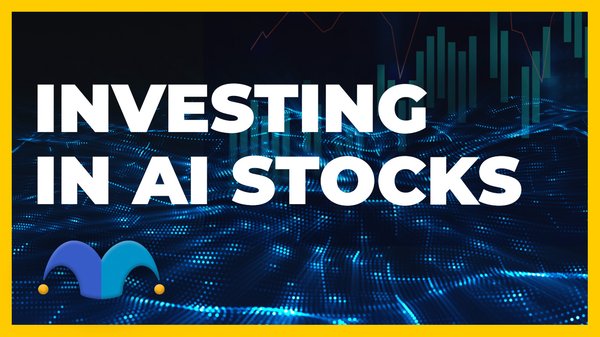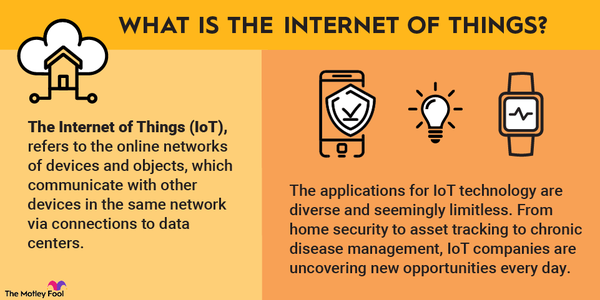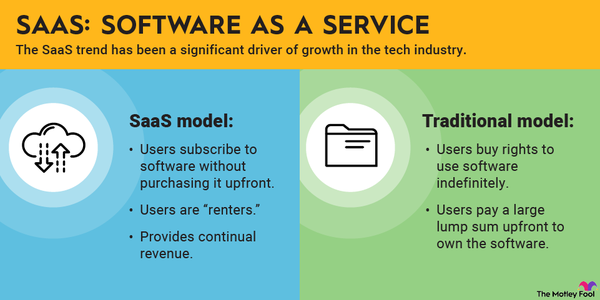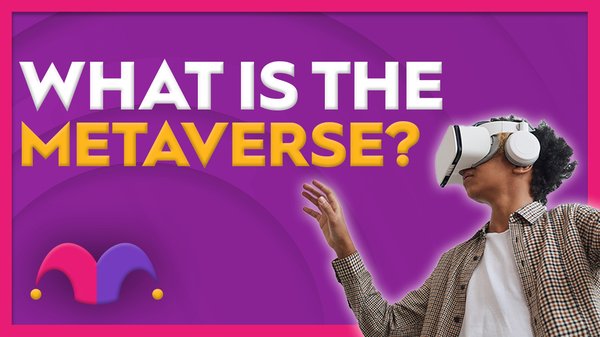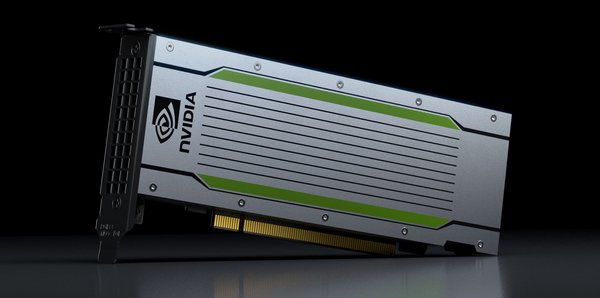It's hard to talk about the general stock market without mentioning one or more FAANG stocks. The tech giants make up a sizable portion of the S&P 500 index, which means many investors already have at least some exposure to them. Because of the heavy weighting of FAANG stocks in indexes such as the S&P 500, it's worthwhile for investors to learn a bit more about them.

What are FAANG stocks?
What are FAANG stocks?
First coined by Jim Cramer in 2013, FAANG is an acronym used to describe some of the most prominent companies in the tech sector. Originally, the acronym was FANG for Facebook, Amazon (AMZN 0.22%), Netflix (NFLX 1.94%), and Google. In 2017, investors started including Apple (AAPL -1.98%) in the group, turning the acronym into FAANG.
Despite some prominent company name changes -- Facebook is now Meta Platforms (META 0.51%), and Google is now Alphabet (GOOGL -0.04%) (GOOG 0.01%) -- the acronym has stuck. But with Netflix falling out of favor with investors, and given the strength of another tech giant, Microsoft (MSFT 0.7%), some have started discussing a similar group of stocks, sometimes known as MAMAA: Meta, Apple, Microsoft, Amazon, and Alphabet.
Over the past decade, the FAANG stocks and Microsoft shares have grown faster than the overall S&P 500 or the more technology-focused Nasdaq. The original four FANG stocks were all internet-based companies.
However, the later inclusion of Apple -- primarily a consumer hardware manufacturer -- made FAANG a broader group of technology stocks. The inclusion of Microsoft in MAMAA cements the mega-cap tech focus instead of the internet focus of the original group.
1. Meta Platforms
1. Meta Platforms
Meta owns two of the world's largest and most engaging social media apps (Facebook and Instagram) and two of the biggest messaging apps (WhatsApp and Messenger). It makes money by displaying ads to users while they browse photo and video feeds. Meta is investing heavily in virtual reality (VR) technology, led by its Quest headset.
The shift to VR and the metaverse is reflected in the company's renaming itself Meta Platforms. However, its metaverse-focused business, Reality Labs, has lost more than $21 billion since the beginning of 2022.
2. Amazon
2. Amazon
Amazon is the world's largest business-to-consumer e-commerce company. Its Prime membership program has over 200 million global subscribers who have proven extremely loyal to the company's online marketplace.
Although e-commerce accounts for the bulk of its revenue, Amazon also found profit engines in cloud computing services and advertising. In fact, most of its profit now comes from its cloud infrastructure business, Amazon Web Services.
Cloud Computing
3. Apple
3. Apple
Apple is one of the biggest smartphone manufacturers in the world. Device sales account for most of Apple's revenue. However, in recent years, the company has expanded its focus.
The company now also focuses on higher-margin subscription services, including music and video streaming, gaming, news, and cloud storage. The upcoming launch of its new spatial computing headset, Vision Pro, could set off the transition to the next major computing platform.
4. Netflix
4. Netflix
Netflix is one of the first internet-born media companies. In 2007, it started shifting from a DVD-by-mail service to on-demand streaming and began investing in its own original content for the streaming service in 2012.
Today, Netflix is one of the biggest buyers of film and television productions worldwide, serving over 200 million global subscribers. While legacy media companies have launched their own streaming platforms, Netflix remains the clear leader in the industry.
5. Alphabet
5. Alphabet
Alphabet is a tech conglomerate primarily split between Google and its "other bets" segment. Although Google started as an internet search company, it's continued acquiring and developing consumer-facing products -- nine boasting more than 1 billion users each. Google also encompasses a growing cloud computing business and a relatively small hardware business.
The other bets segment includes Alphabet's moonshots, such as automated-vehicle business Waymo and health researcher Verily. Since OpenAI's ChatGPT launched, Alphabet has touted its own AI capabilities and introduced its own chatbot interface, Bard AI, staking its claim as a leader in artificial intelligence (AI).
6. Microsoft
6. Microsoft
Microsoft started out by licensing its Windows operating system to PC manufacturers, but it's a much broader company 40 years later. Windows licensing sales are now dwarfed by its cloud computing operation, Azure, and its Office productivity suite.
The company also operates a gaming segment led by Xbox and Activision Blizzard and an advertising business across its search engine, web portal, and LinkedIn social network. Additionally, it has a relatively small consumer device segment.
Driven by its relationship with OpenAI, the company sees AI as the next major frontier and has invested significantly in new products like the AI-powered Bing.
Should I invest?
Are FAANG companies a good investment?
FAANG stocks have historically outperformed the S&P 500 index. Alphabet has been the worst performer of the bunch since June 2013, but it's still more than doubled the performance of the S&P 500. The strongest performer in that time has been Apple, up roughly 15-fold.
| Stock/Index | Total Return Since June 19, 2013 |
|---|---|
| META | 1,340% |
| AMZN | 967% |
| AAPL | 1,110% |
| NFLX | 1,420% |
| GOOGL | 521% |
| MSFT | 961% |
| S&P 500 | 177% |
The five FAANG companies combined account for approximately 20% of the S&P 500 and close to half of the Nasdaq-100 Index. Replacing Netflix with Microsoft bumps those percentages up to about 26% and 60%, respectively.
As every investor should know, past results don't guarantee future success. Indeed, the FAANG stocks and Microsoft all underperformed the S&P 500 in 2022 during the bear market. That said, FAANG companies exhibit several competitive advantages that make them appealing long-term investments. Most of the companies benefit from network effects.
- Meta's billions of active users make its products valuable to new users.
- Google products, including YouTube and Search, benefit from their billion-plus users.
- Amazon's Prime service brings tens of millions of shoppers to its marketplace daily, making its seller services more attractive to third-party merchants.
- Netflix's tens of millions of viewers share feedback about the content the company should invest in and provide the revenue to support its massive budget.
- The lock-in effect of the Apple ecosystem creates significant switching costs for iOS users. That competitive advantage is getting stronger as Apple develops more services, such as Apple Music and Apple Arcade.
- The popularity of Microsoft's Windows supports the development of applications for Windows, which locks customers into the operating system. Its move to cloud computing and software-as-a-service has enabled it to maintain its position in an increasingly platform-agnostic market.
Profitability
Are FAANG (or MAMAA) stocks profitable?
All five FAANG companies and Microsoft have intangible assets that should make them more profitable than their rivals. Facebook, Amazon, and Google have troves of user data they can tap into to target advertisements. Netflix's move to original content and exclusive licenses makes its content library irreplaceable.
Apple is one of the few companies that makes both the hardware and the software for its devices -- and it is certainly the only one at its scale. It's hard to find an enterprise operation that doesn't use Microsoft's Office suite. Switching costs are too high for a manager to risk his job by selecting another suite of services and training everyone on how to use it.
These competitive advantages can make the FAANG (or MAMAA) stocks great potential investments. Still, investors should examine each stock's valuation relative to its own historical value and comparable competitors before buying.
ETF options
Can I invest in a FAANG stocks index ETF?
No fund or exchange-traded fund (ETF) exclusively contains FAANG or MAMAA stocks. However, the NYSE FANG+ index tracks the five FAANG stocks and five other tech and tech-enabled leaders, including Microsoft.
Exchange-Traded Fund (ETF)
In November 2019, BMO Financial Group issued an exchange-traded note that tracks the FANG+ index. It trades on the NYSE Arca exchange under the ticker FNGS (NYSEARCA:FNGS). Owning it is the simplest way for investors to gain added exposure to the returns of FAANG stocks. The ETN has an expense ratio of 0.58%.
With such a small index, investors may be better off building their own portfolio of FAANG or MAMAA stocks and avoiding the ETN expenses. That's especially true now that most discount brokers charge no commissions and allow fractional share purchases.
Related investing topics
Bottom line on investing in FAANG or MAMAA stocks
Building your own portfolio allows you to optimize stock purchases and sales for your own unique capital gains tax situation. Considering they're a major component of the S&P 500, FAANG or MAMAA stocks probably already play at least a small role in your portfolio. But if you want additional exposure to these excellent companies, you can buy the FANG+ ETN or simply dedicate a portion of your portfolio to the stocks themselves.
FAQs
FAQs about FAANG and MAMAA stocks
What is a FAANG Stock?
FAANG stocks refer to a group of big tech stocks traditionally made up of Facebook (Meta Platforms), Amazon, Apple, Netflix, and Google (Alphabet). These tech stocks were named as a group because they have long records of outperformance and dominate their respective markets.
What does FAANG stand for?
When the term was coined in 2013, FAANG referred to Facebook, Amazon, Apple, Netflix, and Google. Today, the original FAANG term is sometimes used. There are also alternatives like FAAMNG (to include Microsoft) and MAMAA (replacing Netflix with Microsoft and using the updated names of Meta Platforms and Alphabet).
What is the best ETF for FAANG?
No ETF offers exclusive exposure to FAANG stocks. Your best bet among exchange-traded investments is the MicroSectors FANG+ ETN, which counts FAANG stocks as about half its total portfolio. Since there are only five stocks in the FAANG, it wouldn't be difficult to buy and hold all of them if you are looking for direct exposure.
How much of the S&P 500 is FAANG?
The percentage of the S&P 500 market cap comprising FAANG stocks varies, but as of late 2023, it was close to 20%. If you substituted Microsoft for Netflix, it would be closer to 26%. That figure shows how influential FAANG stocks are on the market, as these are just five of the 500 stocks in the broad-market index, but their weight on the index is roughly 25 times that.










